All issues

Volume 46, Issue 11
JOURNAL OF LIGHT METAL WELDING
Displaying 1-1 of 1 articles from this issue
- |<
- <
- 1
- >
- >|
Technical Paper
-
Katsuya Kondou, Nobuhiro Matsumoto, Kouji Wada, Osamu Ohashi2008 Volume 46 Issue 11 Pages 511-517
Published: November 15, 2008
Released on J-STAGE: July 17, 2013
JOURNAL FREE ACCESSRecent reports on sintering and bonding using the pulsed electric current bonding process indicate that the metals are subjected to Joule heating due to the electrical resistance at the contact points. However, the influence of bonding conditions on local heating phenomena and joint quality remains unclear. In this study, the effects of bonding conditions (bonding temperature, pressure, surface roughness, interlayer, electric current wave and so on) on joint efficiency are investigated using 5052Al and 6063Al in pulsed electric current bonding. The joints strength of 5052Al and 6063Al are improved using 2024Al as the interlayer between the bonding interfaces. The joints with the 2024Al powder as the interlayer are stronger than ones with 2024Al plate, and are as strong as the base metal. The improvements of the joints depend on effective heat generation at bonding interface due to the electrical resistance. It is 0.08g(thickness: 0.04mm) enough for the amount of powder between the bonding interfaces. The dispersion of the powder from the joints does not occurred under various conditions. The surfae roughness and electric current wave (direct current, duty ratio, pulse frequency) have not effect on the joint strength. With the increase of bonding temperature and pressure, the deformation of joints increases. Then bonding temperature and pressure have to be select to prevent the big deformation of joint configuration.View full abstractDownload PDF (1464K)
- |<
- <
- 1
- >
- >|